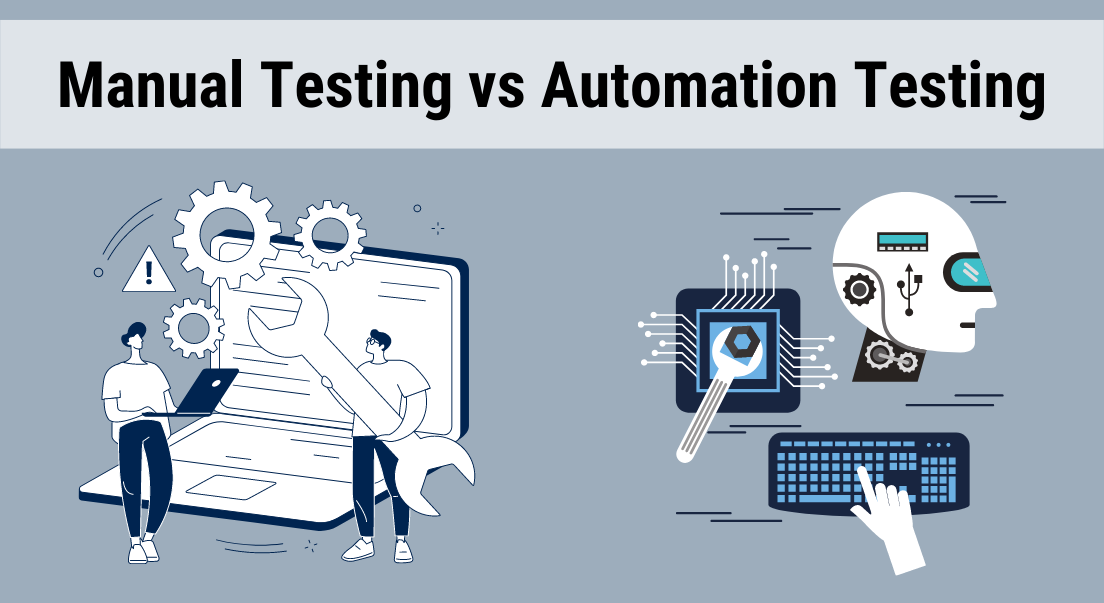Automation Testing Methods: Finest Practices for Seamless Assimilation
Automation Testing Methods: Finest Practices for Seamless Assimilation
Blog Article
From Manual to Automated Testing: A Comprehensive Overview to Transitioning Smoothly and Successfully
In the realm of software application testing, the shift from guidebook to automated procedures has ended up being an increasingly essential shift for companies seeking to boost efficiency and precision in their screening practices. The trip from manual to automated screening is not without its challenges, however when come close to strategically and with a clear strategy in mind, the benefits can be considerable.
Advantages of Automated Evaluating
Automated screening supplies countless advantages, enhancing efficiency and accuracy in software application advancement procedures. Automated examinations can be run all at once on numerous tools and running systems, significantly speeding up the testing phase compared to manual testing.
In addition, automated screening guarantees a greater degree of accuracy in detecting issues. Uniformity in testing is additionally enhanced, as automated tests implement the exact same steps exactly each time they are run.
Selecting the Right Devices

First of all, evaluate your demands and goals. Understand the scope of your task, the modern technologies entailed, and the ability of your team. This analysis will certainly aid you establish the attributes and abilities you call for in your screening tools.
Secondly, take into consideration the compatibility of the devices with your existing systems and processes. Smooth combination with your present software growth lifecycle is important to make certain a smooth shift to automation.
Additionally, review the scalability and versatility of the tools. As your testing needs advance, the tools should have the ability to adapt and suit modifications efficiently.
Last but not least, consider the support and area around the devices. When implementing automated screening, robust assistance and an energetic individual area can offer beneficial resources and aid. By carefully taking into consideration these aspects, you can choose the right devices that align with your demands and established the stage for an effective transition to automated testing.
Composing Reliable Examination Scripts

When crafting test manuscripts, it is necessary to consider the certain needs of the software application being tested and make sure that the scripts attend to all critical performances. Clear and descriptive calling conventions for test scripts and examination cases can improve readability and maintainability. Additionally, integrating mistake handling mechanisms within the examination manuscripts can help in determining and resolving issues immediately.
Furthermore, organizing test manuscripts right into modular parts can enhance reusability and scalability, lowering redundancy and boosting efficiency in test script upkeep. Routine evaluations and updates to test manuscripts are important to maintain pace with evolving software demands and functionalities. By adhering to these principles, testers can create efficient and durable test scripts that contribute substantially to the success of automated screening procedures.
Integrating Automation Into Workflows
Efficient integration of automation tools into existing workflows improves processes and enhances efficiency within software application growth cycles. When including automation right into process, it is vital to determine repeated tasks that can be automated to save time and decrease human error. By seamlessly incorporating automated screening devices like Selenium or Appium right into the software program growth lifecycle, groups can accomplish faster comments on code modifications, resulting in quicker bug discovery and resolution. This assimilation permits continual testing throughout the development procedure, making sure that any issues are identified early on, causing greater software high quality. Furthermore, automation can be used to set off examinations immediately after each code dedicate, providing prompt validation and liberating testers to concentrate on more facility situations. Proper combination of automation tools needs collaboration between growth, testing, and procedures groups to develop a unified workflow that maximizes effectiveness and effectiveness in providing high-grade software program products.
Ensuring a Smooth Transition
Efficiently transitioning to automated testing includes careful preparation and careful execution to reduce interruptions and optimize effectiveness in the software application advancement procedure - automation testing. To guarantee a smooth shift, it is vital to begin by performing a comprehensive article evaluation of the present testing processes and determining areas where automation can bring the most significant benefits. Engaging with all stakeholders early on at the same time, consisting of programmers, testers, and task supervisors, is critical for amassing assistance and buy-in for the automation effort
Interaction is essential during this transition phase. Clear interaction of the objectives, advantages, and expectations of automated screening helps to manage any type of resistance or problems that may arise. In addition, giving ample training and sources for group participants to upskill in automation devices and strategies is essential try here for making sure a successful transition.

Verdict
To conclude, transitioning from handbook to automated screening offers many benefits, consisting of raised effectiveness and dependability. By choosing the proper devices, composing efficient test scripts, and integrating automation perfectly into workflows, organizations can ensure a smooth and successful shift. It is important to welcome automation as a beneficial property in software application testing processes to improve total top quality and efficiency.
In the realm of software testing, the change from handbook to automated procedures has actually ended up being an increasingly vital change for companies seeking to enhance performance and precision in their testing practices. Automated examinations can be run all at once on several devices and operating systems, try this web-site drastically speeding up the screening stage compared to hand-operated screening. Consistency in screening is likewise improved, as automated examinations perform the same actions precisely each time they are run.To make certain the effective implementation of picked testing devices, the development of effective examination scripts plays a critical function in validating the capability and performance of automated procedures - automation testing. By following these concepts, testers can create durable and effective examination scripts that add substantially to the success of automated screening procedures
Report this page